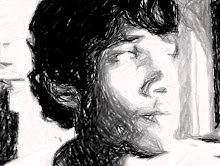Our job is to harmonize the increasing kit of scientific tools and the increasing recklessness in using them with the shrinking biotas to which they are applied. In the nature of things we are mediators and moderators, and unless we can help rewrite the objectives of science we are predestined to failure.
Aldo Leopold (1940; 1991)
Conservation in the old sense, of this or that resource in isolation from all other resources, is not enough. Environmental conservation based on ecological knowledge and social understanding is required.
Raymond Dasmann (1959)
Raymond Dasmann (1959)
Conservation biology is a mission-driven discipline comprising both pure and applied science....
We feel that conservation biology is a new field, or at least a new rallying point for biologists wishing to pool their knowledge and techniques to solve problems.
Michael E. Soulé and Bruce A. Wilcox (1980)
Michael E. Soulé and Bruce A. Wilcox (1980)
Conservation biology, though rooted in older scientific, professional, and philosophical traditions,
gained its contemporary definition only in the mid-1980s. Anyone seeking to understand the history and growth of conservation biology thus faces inherent challenges. The field has formed too recently to be viewed with historical detachment, and the trends shaping it are still too fluid to be easily traced.
Conservation biology’s practitioners remain embedded within a process of change that has challenged conservation “in the old sense,” even while extending conservation’s core commitment to the future of life, human and non-human, on Earth. There is as yet no comprehensive history of conservation that allows us to understand the causes and context of conservation biology’s emergence. Environmental ethicists and historians have provided essential studies of particular conservation ideas, disciplines, institutions, individuals, ecosystems, landscapes, and resources.
Yet we still lack a broad, fully integrated account of the dynamic coevolution of conservation science, philosophy, policy, and practice (Meine 2004). The rise of conservation biology marked a new “rallying point” at the intersection of these domains; exactly how, when, and why it did so are still questions awaiting exploration.


0 comments:
Post a Comment